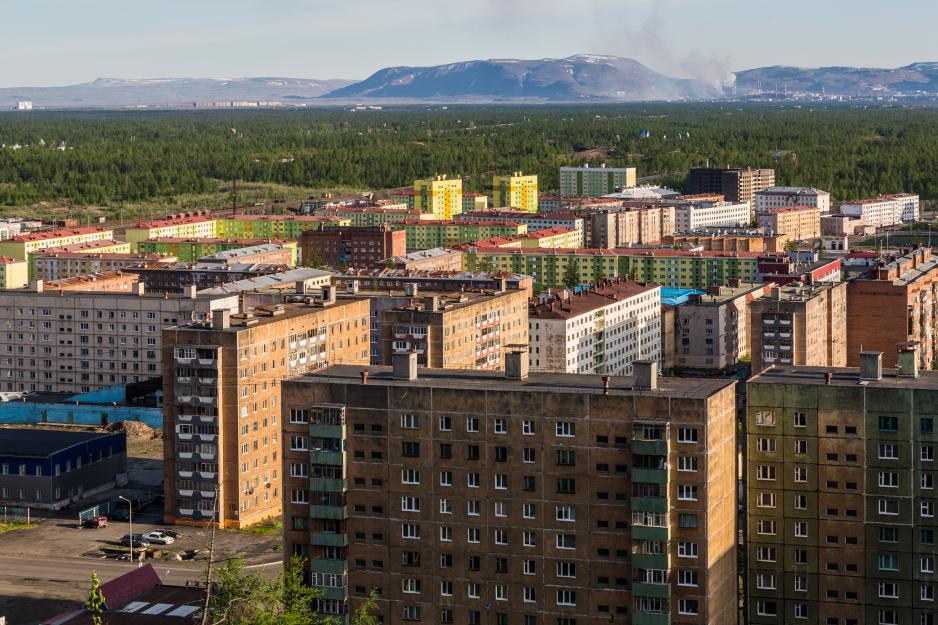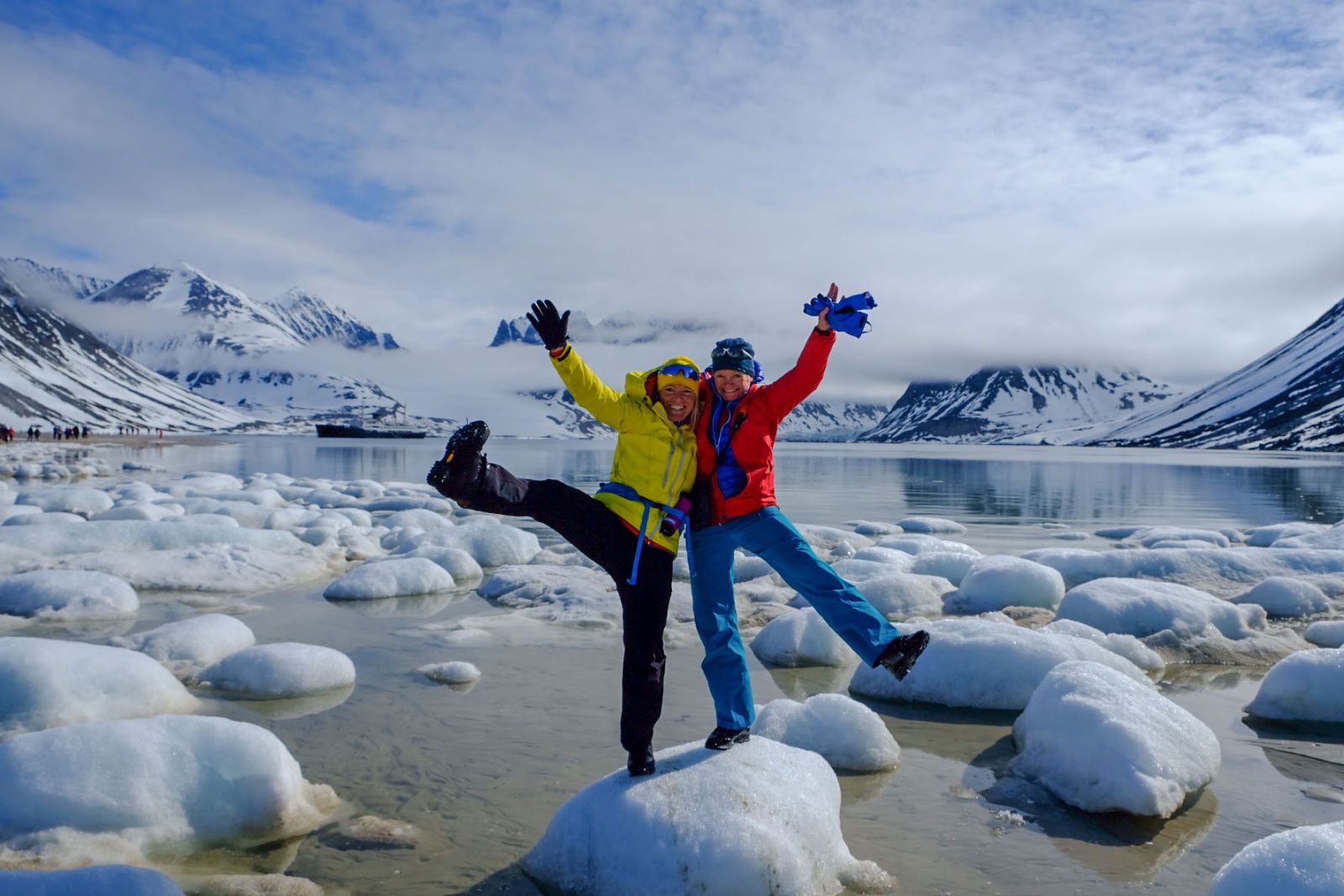Growing social problems in Russian mono-towns
Mono-industrial towns, often based on extractive industries, are a feature of many regions in the Arctic. In Russia’s Arctic, the creation of mono-towns was one of the pillars of the regions’ development under Soviet rule. However, social problems in mono-towns in the Russian Arctic are currently large and growing.
A study recently published examines the factors generating such problems. Some are inherent in all Arctic mono-towns, such as the harsh environmental conditions, the remoteness from financial and administrative centres, and the dependence on “city-forming” companies.
Other problems, Vera Samarina and her co-authors of the Kola Science Centre of the Russian Academy of Sciences and the Belgorod State National Research University claim, are due to deficiencies in the municipal administration.
These include the lack of necessary social institutions, a problematic relationship between the city and its most important company, a lack of funds for implementing municipal social policies, and an insufficiently skilled labor force.
Expensive and underdeveloped
“Even though it is a diamond town, it is quite an expensive, under-developed town. Expensive because it is situated quite far from big cities and transportation is long and costly. Under-developed because it looks like it is still stuck in the Soviet time and very few new buildings are constructed since then. Air quality is bad due to the open kimberlite pipe,” says Maria Ivanova (36), who lives in Mirny, a town with more than 35,000 inhabitants, dominated by the diamond industry and located 820 kilometres west of Yakutsk, the capital of the Sakha Republic.
Maria Ivanova is not her real name. For security reasons, the citizen wants to remain anonymous.
The city faces similar problems to other mono-towns in the Russian Arctic. The dominance of one cluster of companies brings with it very specific challenges:
“Since these towns have only one dominant industry, many of the inhabitants are temporary workers, who come to earn money and leave. The salary in those companies is quite good, but other companies or services could be offering quite a low salary. Many locals can face unemployment if they are not qualified enough with the skills of the city dominating industry. Therefore many professionals are hired from outside.”
Ivanova also considers the infrastructure as deficient:
“Medicine is poor in this town because of a lack of doctors and other staff. Mirny can have some issues related to some cultural or social life since it is a small town. Education in Mirny is good though; there are some good schools with modern infrastructure etc., but many youngsters leave as soon as they graduate. Buying a house or flat is extremely expensive, but even if you buy something it would be pretty difficult to sell it since no one would buy that. To rent an apartment is also very expensive because people are usually unemployed or prices are high”, she says.
Even though it is a diamond town, it is quite an expensive, under-developed town
Soviet legacy
Despite their unique history and development, Russia’s Arctic mono-towns could serve as a case study concerning the economic and social situation in mono-industrial towns across the Arctic, an issue tightly connected to the development of Arctic regions.
Based on and adding to these institutional failures, Olga Povoroznyuk, a researcher at the University of Vienna who studies the region of the Baikal-Amur Mainline (BAM) railway, also lists as social problems “unemployment, lack of educational, cultural and recreational opportunities, and infrastructural degradation.” Urban settlements close to the BAM are usually single-industry towns that depend on extractive industries and the railroad.
Since the dissolution of the USSR, “population outflow and economic decline lead to the shrinking of such towns. This means deindustrialization, demodernization and the shrinking of permanent population in the Arctic, which is especially noticeable in the Russian part,” Povoroznyuk further comments.
Unsustainable development
This trend has a negative impact on what is sometimes called “sustainable development” in the Russian Arctic. Povoroznyuk and others argue that Russia’s strategies for economic development lay too much weight on economic efficiency and catering to the technological and infrastructural needs of extractive industries. Economic development is often prioritized at the expense of social development, which produces development disparities between the regions of the Russian Arctic. Instead, the focus should be more on investments in human resources.

This photo was taken in the Talnakh district, just outside Norilsk in northern Siberia. Photo: Ninara
“No one stays to live”
Norilsk is a city with a population of over 100,000 people, located 300 km north of the Arctic Circle. On a YouTube video about the mining city, where one fifth of the world’s nickel is mined, one user commented on the quality of life: “Norilsk is a business city. There is no one who stays to live there. The people who are there, are people contracted by the company. (…) You can live well, especially when you know that at the end of your contract the company gives you a free house on the shores of the Black Sea at the edge of the beach.”
There are no roads to Norilsk, so the only access is by plane or, in the summertime, by ferry. People not hired by Nornickel, the city’s most prominent company, require a special permit to enter Norilsk. “The whole city belongs to the company. (…) The city was only built so that the men could be close to the mines,” the same user adds. Despite the city’s remoteness, “in Norilsk there is everything: shopping centres, gyms, swimming pools, park roofed aquatics, local television, coffee shops, restaurants, and many nightclubs to party.”
Dependent on state participation
Samarina and her co-authors propose two main ways to resolve the problems. The first comprises measures to diversify the labour market and realize an “active employment policy”. This includes on one hand making the labour market more efficient and adjusting the fit between employees’ and employers’ needs, for instance through a “municipal bank of vacancies” and by forecasting labour demand. On the other hand, residents’ employment-related situation should be targeted through higher education and other educational services, as well as enhancing the housing conditions and labour protections.
The second way focuses on improving living standards, including the civil engineering infrastructure - water, heat, waste disposal, electric power - and transportation, such as the state of the roads. The ecological side is also part of the solution: Atmospheric emissions should be reduced, disturbed soils reclaimed, and a better waste management system established.
However, these solutions are dependent on the active participation of the Russian state. This begs the question: Is the state willing to invest time and other resources in a more “sustainable” development of its Arctic regions?
Promising social and human capital
Povoroznyuk explains the situation referring to a phenomenon termed the “resource curse”, where regions rich in natural resources often develop in an unsustainable way and lag behind on social indicators. This “curse” is characteristic of the BAM region, despite its promising social and human capital, which is the result of the successful integration of newcomers and the construction of community identities. Cultural and ethnic tolerance further contributes to a favourable social environment.
She suggests the economic diversification of mono-towns is a step in the direct direction: “Possible solutions could be economic restructuring, including investments in industries other than resource extraction, such as tourism, agriculture and subsistence activities, etc.”
One example of subsistence activity that could be developed into commercial enterprises is reindeer herding and hunting, and partly related to it, ethnic tourism. However, extractive industries compete with traditional land users for the land and, more often than not, emerge victorious from associated legal and political struggles. These industries thus minimize residents’ other economic opportunities, while creating social tensions between Indigenous and non-Indigenous populations.
Beneficial for whom?
It seems that while the companies behind Russia’s Arctic mono-towns have a comprehensive incentives package for their employees and their families, they might not benefit the region at large. The demise of the Soviet Union has led to socio-economic problems, which have yet to be resolved. In the meantime, extractive industries displace traditional land uses and thus disadvantage Indigenous people. According to the study by the Kola Science Centre, the social problems are solvable through active state intervention and better management. It remains questionable, however, whether the Russian state is indeed motivated to take on this monumental task.


